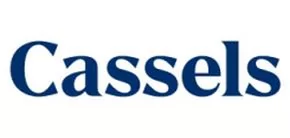The Canadian Intellectual Property Office ("CIPO")
announced in a Practice Notice dated March 28, 2012, that,
effective immediately, it would accept applications for the
registration of sound trade-marks.
This announcement resulted from a consent order issued by the
Federal Court on March 1, 2012, setting aside a decision of the
Registrar of Trade-marks which refused a sound trade-mark
application. The application was for the sound of a roaring lion
and was filed by Metro-Goldwyn-Mayer Lion Corp. ("MGM")
in 1992 based on use of the mark in Canada since 1928. The
application was refused registration on the basis of section 30(h)
of the Trade-marks Act which requires a trade-mark
application to contain a drawing of the mark.
With the consent of the parties and after consideration of the
written representations of the Attorney General of Canada and the
Registrar of Trade-marks, the Federal Court set aside the decision
of the Registrar, approved the trade-mark application and directed
that the application be advertised in the Trade-marks Journal. The
application included a voice print or sonogram of the roaring lion
sound as well as an audio recording, video recording and a
description of the trade-mark. A voice print or sonogram is a
time-varying spectral representation forming an image that shows
how the spectral density of a signal varies with time. This was the
visual representation included in the application:

The motion material filed by the Attorney General of Canada and
the Registrar of Trade-marks stated that the purpose of section
30(h) of the Act is to ensure that the trade-mark is sufficiently
defined so that there is public notice of the scope of the right
sought by the applicant and that sound marks fall within the
definition of "trade-mark" in the Act. As a result, the
material stated that the Registrar ought to have accepted the
visual representation of the sound mark, in combination with the
voice print, audio recording, video recording and description of
the mark as the application satisfied the requirement that the
trade-mark application contain a drawing of the mark.
In accordance with the Federal Court order, the application was
advertised for opposition in the Trade-marks Journal on March 28,
2012.
The CIPO Practice Notice requires that sound mark applications
must:
- State that it is for registration of a sound mark;
- Contain a drawing that graphically represents the sound;
- Contain a description of the sound; and
- Contain an electronic recording of the sound in MP3 or WAVE format, limited to 5 megabytes in size and recorded on a CD or DVD.
This is a significant development as it brings Canada in line
with other jurisdictions, including the United States, that permit
the registration of sound trade-marks. This development may lead to
acceptance of other forms of non-traditional trade-marks by CIPO.
Current proposed amendments to the Trade-marks Regulations include
allowing for the filing of applications to register sound marks as
well as holograms and motion marks.
The owners of sound trade-marks that are distinctive and are
considered by the owners to be valuable properties should consider
seeking trade-mark protection.
The content of this article is intended to provide a general guide to the subject matter. Specialist advice should be sought about your specific circumstances.


